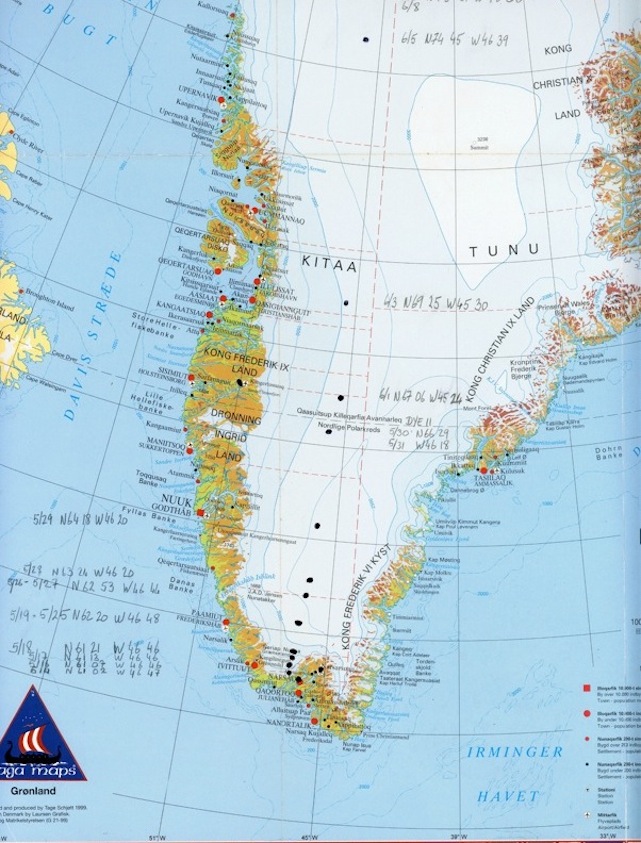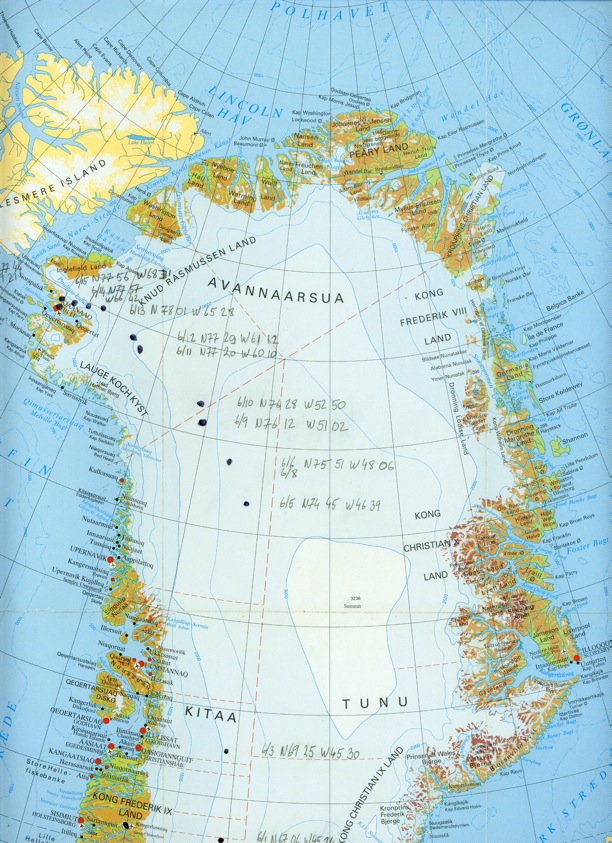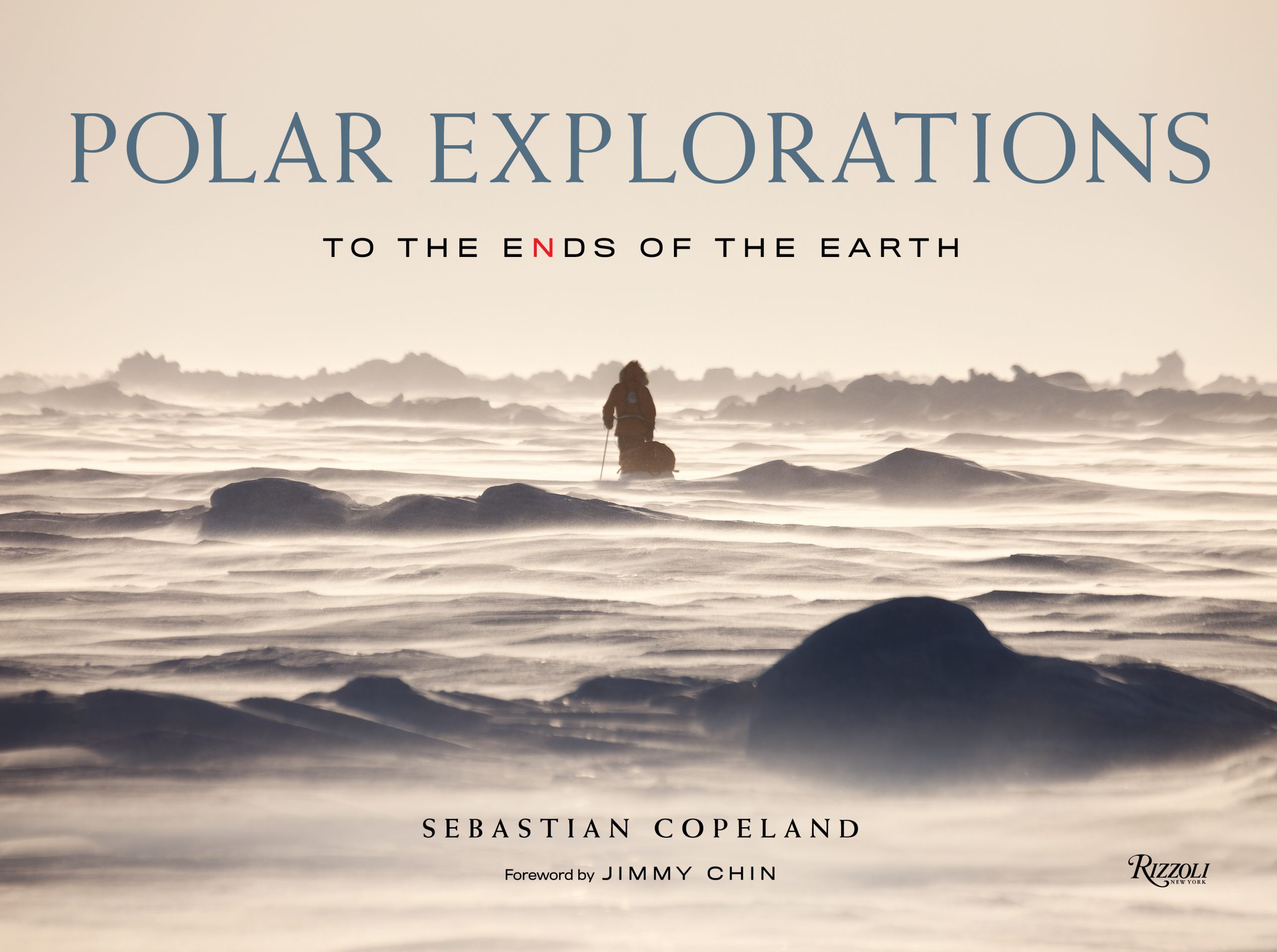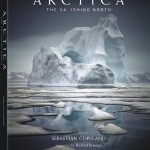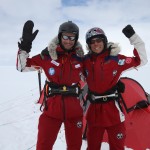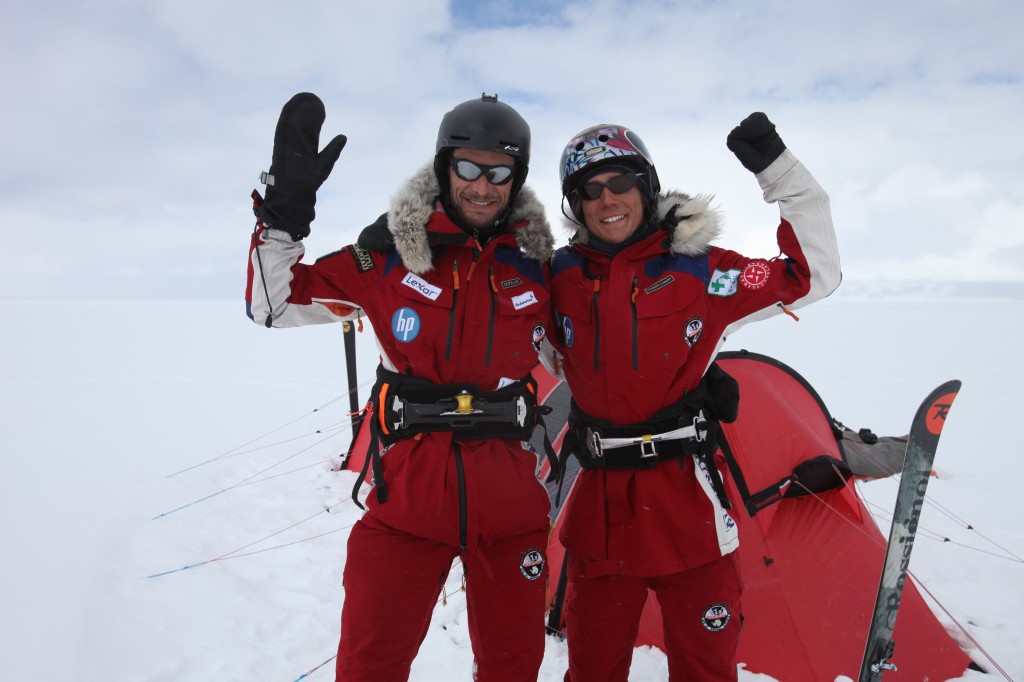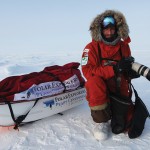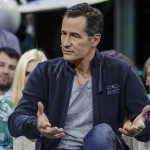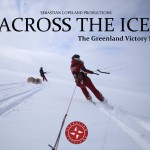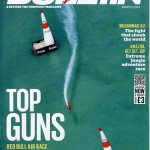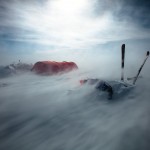Greenland
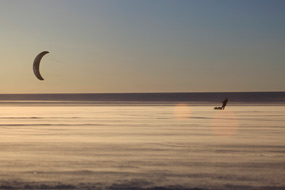 After the North Pole last spring, and in preparation for my South Pole Amudsen/Scott centennial mission in November 2011, I wanted an interim trip over what many consider the “third Pole”. Greenland, in terms of climate change, holds as much drama as the other two—if not more. Its melting icecap sits on solid ground, above sea level, and releases fresh water into the ocean. This presents a triple threat to life as we know it on the planet.
After the North Pole last spring, and in preparation for my South Pole Amudsen/Scott centennial mission in November 2011, I wanted an interim trip over what many consider the “third Pole”. Greenland, in terms of climate change, holds as much drama as the other two—if not more. Its melting icecap sits on solid ground, above sea level, and releases fresh water into the ocean. This presents a triple threat to life as we know it on the planet.
For one, it impacts the thermo haline circulation, which affects the north Atlantic drift (the Gulf Stream). The higher density of cold water, and the light mass of fresh water (as compared to salt water) slows down the conveyer belt action of the gulf stream which has been regulating climates, surface temperatures, and crop cycles, not to mention plankton food distribution, deep water upwelling and sea life across the Atlantic since the last ice age. In other words it is a vital regulator in the way we have based our food economies in the northern hemisphere for the last 15,000 years.
But melting icecaps also raise ocean levels. And the Greenland icecap, like the Antarctica peninsula icecap—its sibling to the south—has the potential to raise ocean levels by as much as 20 feet. Exactly when, no one can say for sure. But some predict that it could happen within as little as a century. Most scientists agree that we will see a rise of about four feet by then, which represents a loss of about four hundred feet of global coastal areas. What’s more, low-rise areas—such as Vietnam, today the world’s second largest rice producing country—could see its plains flooded and its food production destroyed. Greenland, in that way, can affect a lot more than just the Northern hemisphere.
Finally, it is alleged that the Greenland landmass stores more methane in frozen form that there is CO2 in the atmosphere. As a greenhouse gas, methane is 21 times more potent than CO2. If thawed and released, this amount of methane would have a catastrophic and exponential acceleration of the world’s temperature rise, challenging most life forms across the globe…
Greenland, in that sense, is truly in the front lines of climate change. Almost immediately after the North Pole last spring, I started formulating the thought of crossing this mystical ice mass, first crossed by Nansen in its East/West traverse in 1888. And I began planning. Only this time, the crossing will be in its South North axis, covering approximately 2,300 kilometers from Narsaq to Qaanaaq using kites and skis.
While a very different mission, many lessons learned from the Pole will be applied in Greenland. This will also make for great training for my seminal South Pole crossing next winter, which I hope to accomplish unsupported over 85 days and 4,500 kilometers. 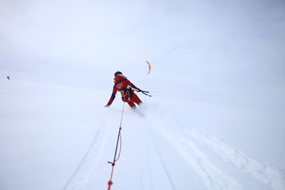 But that’s another story! Eric McNair-Landry, a young polar guide and son of my good friend and polar legend Matty McNair, will accompany me on this trip. I hope this will be entertaining and educational at the same time, while encouraging a deeper connection will our host planet, and the urgent need for a global commitment to a sustainable future. Please follow the blog and join us on this ride! Here we go again…
But that’s another story! Eric McNair-Landry, a young polar guide and son of my good friend and polar legend Matty McNair, will accompany me on this trip. I hope this will be entertaining and educational at the same time, while encouraging a deeper connection will our host planet, and the urgent need for a global commitment to a sustainable future. Please follow the blog and join us on this ride! Here we go again…
Watch the Video
Greenland Map
Team
Sebastian Copeland
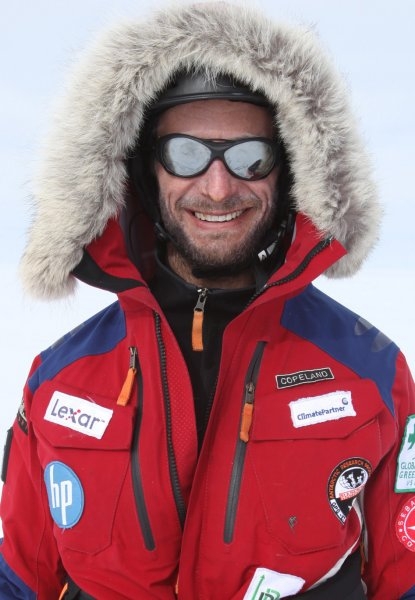
An award-winning photographer, explorer, author, and environmental activist, Sebastian Copeland has made the fight for the protection of the environment his life’s work.
In 2009, Sebastian traveled the Arctic with expedition partner Keith Heger on a journey to reach the North Pole to commemorate its centennial, in hopes of raising awareness to climate change and its effects on the Arctic. The outcome of this voyage is the riveting documentary Into the Cold: A Journey of the Soul. The film captures the two men’s dramatic expedition to the rapidly vanishing North Pole – considered the toughest expedition on Earth.
As an international speaker on climate crisis for over a decade, Sebastian has addressed audiences at the United Nations, the World Affairs Council, the General Assembly on Climate in New Orleans, the George Eastman House, Google Headquarters, and to Apple’s Senior Design Team. He has appeared on Larry King Live, ABC, NPR, Air America, and Al Gore’s Current TV, as a champion of environmental causes.
A world renowned and award winning photographer, Sebastian’s fine quality prints have appeared at the United Nations, the Council on Foreign Relations, Peabody Essex Museum and the Field Museum in Chicago. Sebastian received the prestigious International Photography Awards’ 2007 Professional Photographer of the Year for his first book, “Antarctica: The Global Warning.”
In 2008, Sebastian was named German GQ’s Man of the Year for environmental leadership. In 2009 he received Global Green’s prestigious Founder Award. Sebastian is a board member and tireless advocate for Global Green USA.
Eric McNair-Landry

Eric studied engineering at Acadia University, considering continuing in architecture. In 2004-5 he took off a year of school to join the family Kites on Ice Expedition and became the first American/Canadian to haul un-resupplied to the South Pole. Eric has crossed the Greenland ice cap in its 2300 km South-North axis and hold with partner Sebastian Copeland a world record for the longest distance traveled on kite and skis over a 24 hour period with 595 km. In 2011, Eric and his sister traveled the length of the Northwest passage in winter on skis and kites. Eric is passionate about kiting. When there is no wind, he spends his time in teaching himself computer graphics and website design.


